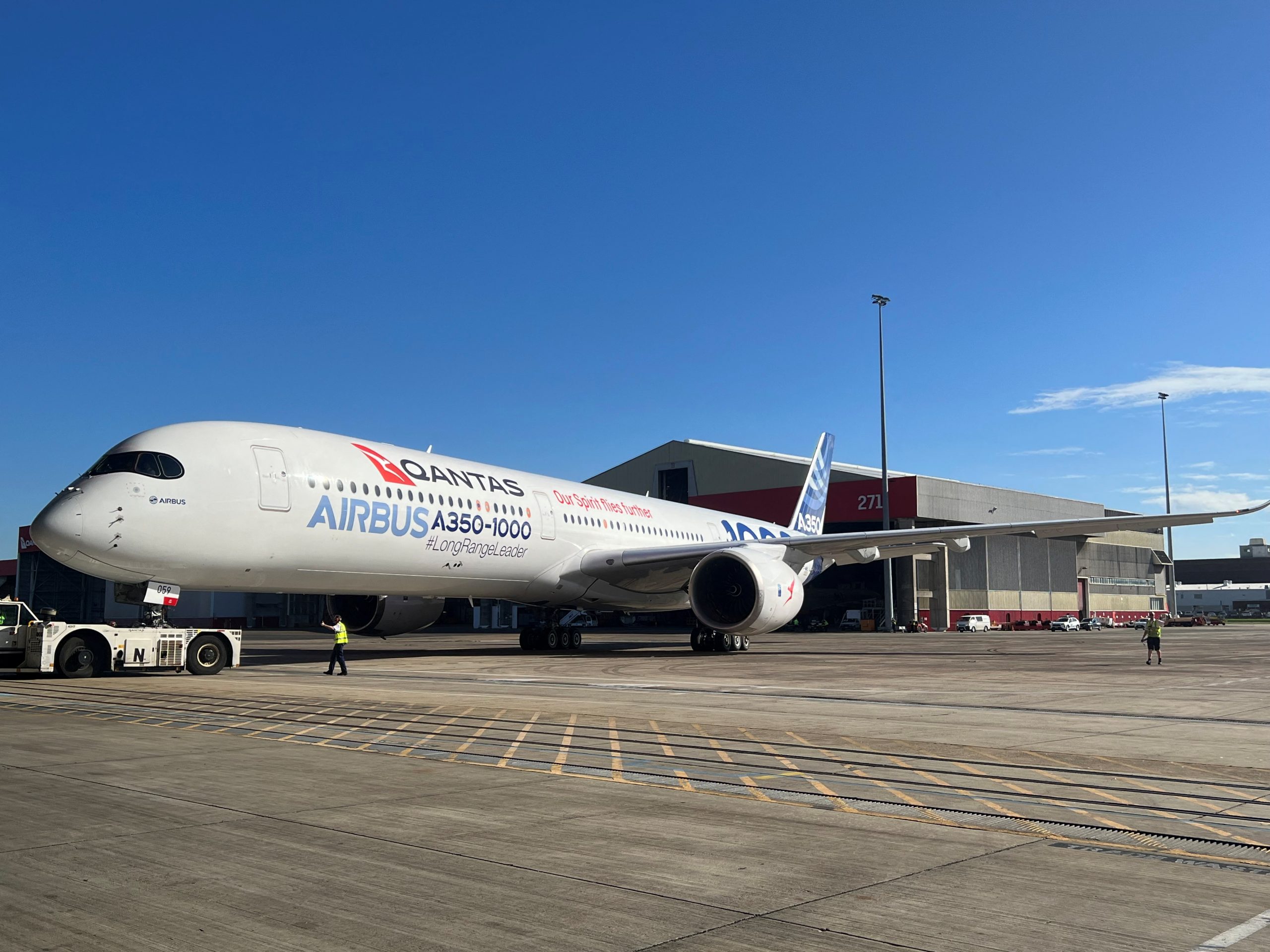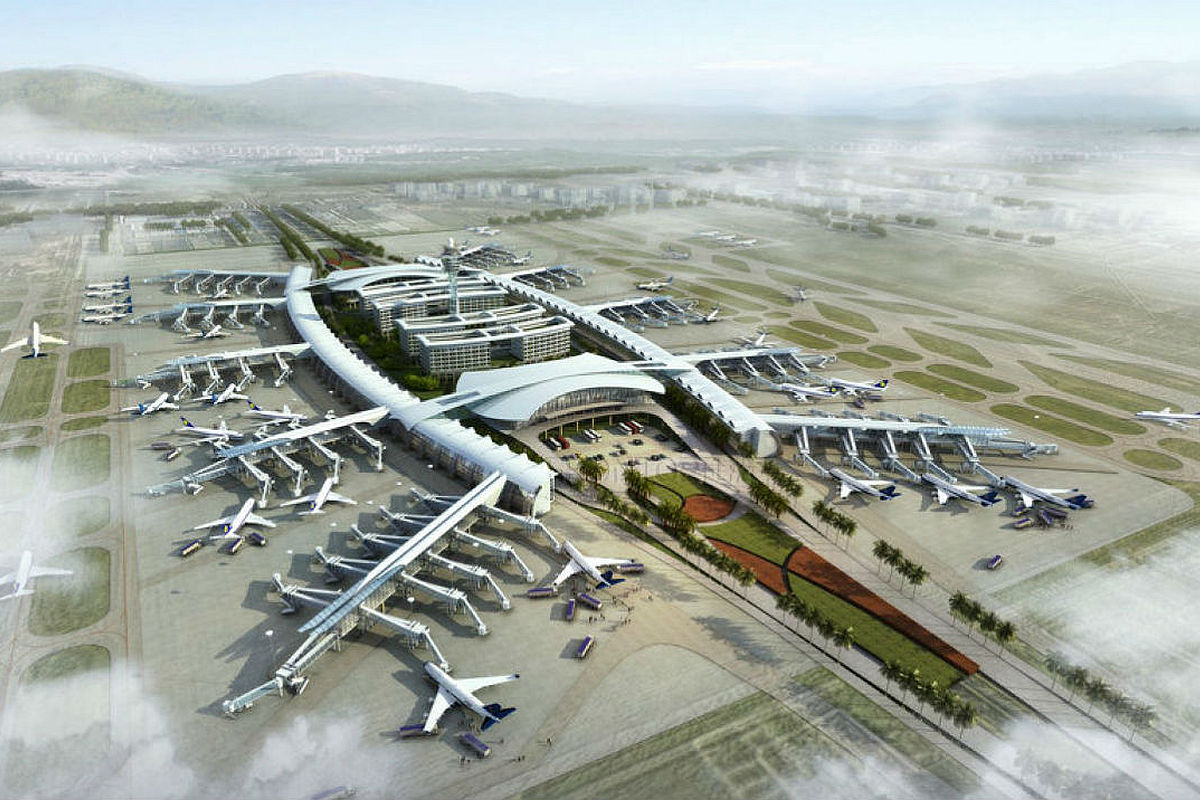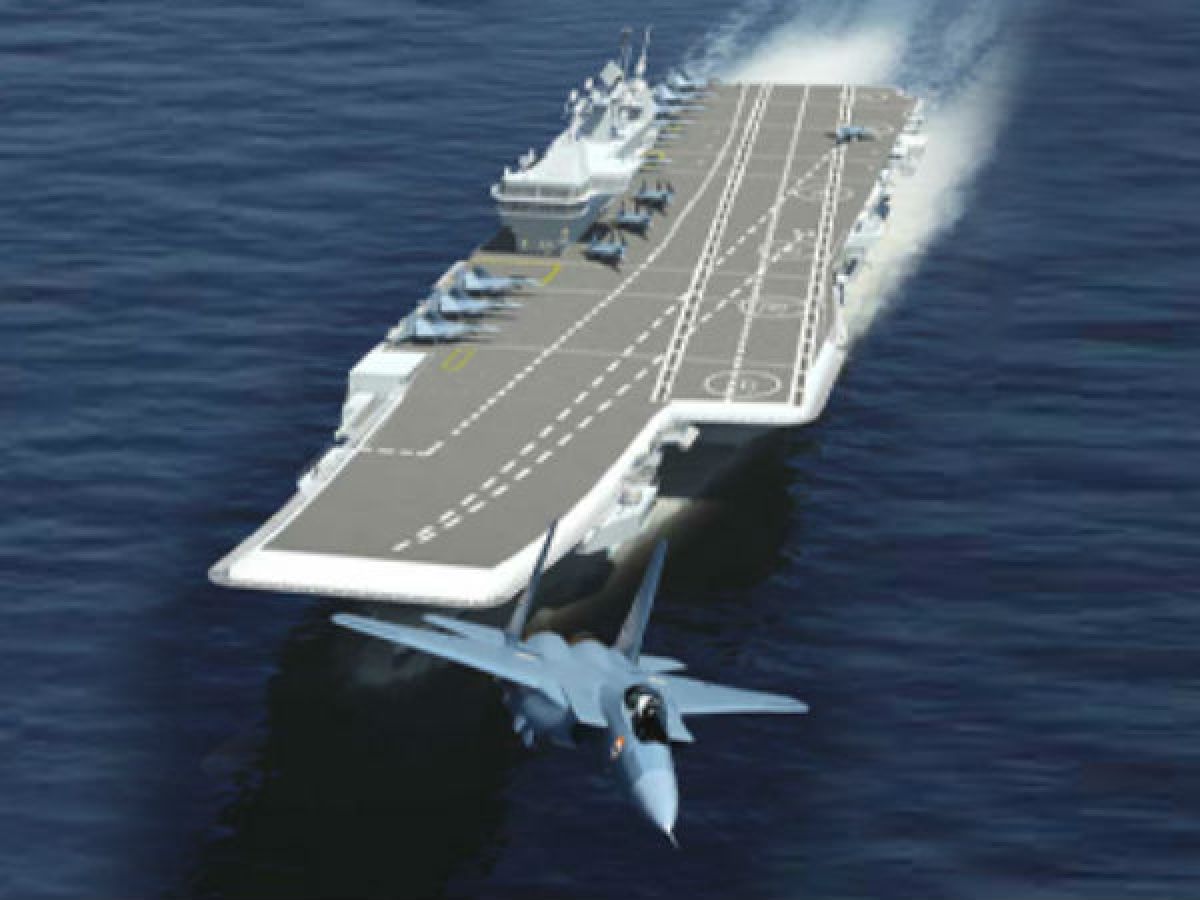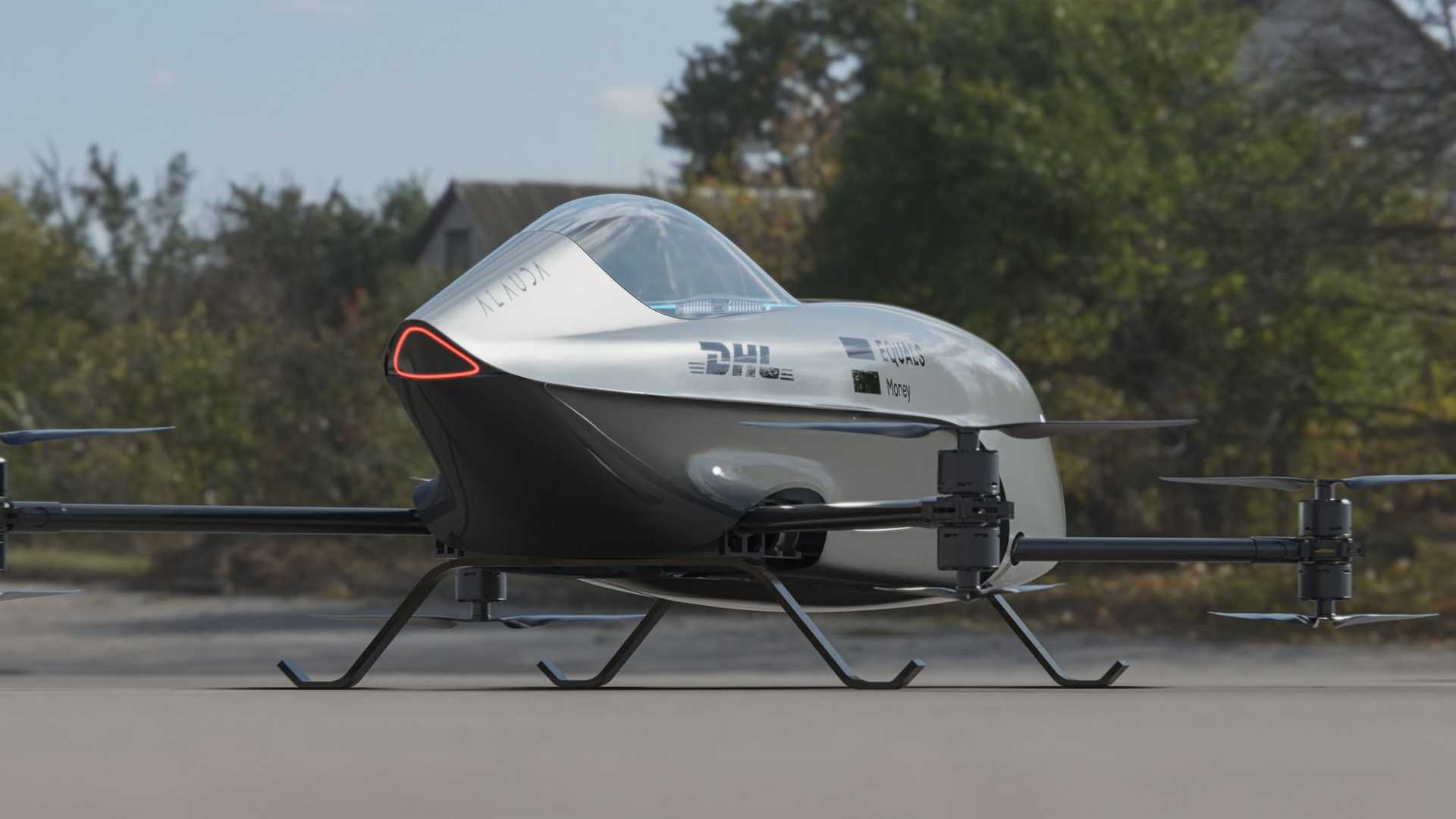Qantas "Project Sunrise" flight from Sydney to London to commence on Airbus A350 aircraft
Radhika Bansal
03 May 2022

Qantas Airways Ltd had ordered 12 A350-1000 planes from Airbus SE to be used on what will be the world's longest commercial flight from Sydney to London, as well as 40 narrowbody jets to renew its domestic fleet.
The deal comes as market conditions improve and demand domestic and international travel recovers from the pandemic faster than expected, allowing the carrier to reduce debt and forecast a return to profit in the financial year starting July 1.
"The board's decision to approve what is the largest aircraft order in Australian aviation is a clear vote of confidence in the future of the Qantas Group," Chief Executive Alan Joyce said in a statement.
Qantas' "Project Sunrise" flight from Sydney to London to commence on Airbus A350 aircraft
Qantas did not disclose the value of the deal but it is likely to be in the billions of dollars based on aircraft list prices. Qantas estimated Project Sunrise would have an internal rate of return of around 15%.
Non-stop flights from Sydney to London, which will take nearly 20 hours, will begin in late 2025 following the delivery of A350-1000s, the airline said.
The A350s will carry 238 passengers across first-class, business class, premium economy and economy class, with more than 40% of the cabin dedicated to premium seating, it added. Qantas said it was also ordering 40 A321 XLR and A220 aircraft from Airbus.
Qantas has also ordered 40 A321 XLR and A220 aircraft from Airbus.
The deliveries of 20 A321XLRs will start in late 2024, while 20 smaller A220s will arrive in late 2023 - renewing the carrier's ageing domestic fleet. The order also includes options to buy another 94 aircraft that would arrive through to 2034.
"The phasing of this order means it can be funded within our debt range and through earnings, while still leaving room for shareholder returns in line with our financial framework," Joyce said.
The new domestic fleet "will reduce emissions by at least 15% if running on fossil fuels, and significantly better when run on sustainable aviation fuel," Joyce said, further asserting that its "Project Sunrise" would be carbon neutral from day one.
Qantas in December selected Airbus as the preferred supplier for a major order to renew its ageing narrowbody fleet
Airbus Chief Commercial Officer Christian Scherer said the aircraft to be used on the Sydney-London flights would offer more fuel storage than A350-1000s currently in operation with other airlines.
Qantas in December selected Airbus as the preferred supplier for a major order to renew its ageing narrowbody fleet, in a blow to incumbent supplier Boeing.
The carrier was set to announce the deal that brings it closer to launching record-breaking direct flights of nearly 20 hours on the "Kangaroo route" between Sydney and London.
Qantas operated research flights for the long-haul route in 2019, including a trial London-Sydney trek of 17,800 kilometres (11,030 miles), which took 19 hours and 19 minutes. A trial New York-Sydney flight in the same year covered 16,200 kilometres (10,200 miles) and took a little over 19 hours.
Qantas already operates a 14,498-kilometre Perth-London trip that takes 17 hours.
Singapore Airlines currently operates the world's longest non-stop commercial flight from Singapore to New York, covering 16,700 kilometres (10,400 miles) in a little under 19 hours. Qantas already operates a 14,498-kilometre Perth-London trip that takes 17 hours.
The A350-1000 planes will be powered by Rolls-Royce Trent XWB-97 turbofan engines, designed to be 25% more fuel-efficient than the previous generation of aircraft, Qantas said.
In a separate filing, Qantas said while it expects an underlying operating loss for fiscal 2022, the second half of the year would benefit from improved domestic and international demand with free cash flow seen rising further in the current quarter.
Pratt & Whitney GTF Engines to Power Qantas Airbus A220 and A320neo Family
Qantas Airways ("Qantas") has confirmed selection for Pratt & Whitney GTF engines to power 40 Airbus A220 and A320neo family aircraft, including A321XLR, which the airline will operate on domestic and short-haul international routes.
Leaders from Airbus, Qantas and Pratt & Whitney gathered in Sydney, Australia, to celebrate the milestone with A220 aircraft demonstration flights and a static display for media, stakeholders and employees.
Pratt & Whitney GTF Engines to Power Qantas Airbus A220 and A320neo Family
Pratt & Whitney will also provide Qantas with engine maintenance through a long-term EngineWise® Comprehensive service agreement. Aircraft deliveries are expected to begin in the second half of 2023.
Headquartered in Sydney, Australia, Qantas is the flag carrier of Australia. The airline's history with Pratt & Whitney goes back more than 70 years to Wasp-powered Douglas DC-3 and DC-4 aircraft, followed by JT3D-powered Boeing 707 aircraft when the airline entered the jet age.
Qantas Group currently operates several aircraft types with Pratt & Whitney engines, including more than 100 Airbus A320ceo family aircraft with V2500 engines at Jetstar, De Havilland Canada Dash 8 aircraft with PW100 and PW150 engines at QantasLink, and the world's first Airbus A321P2F at Qantas Freight, a passenger-to-freighter conversion powered by V2500 engines.
Read next
75% of work on the international greenfield airport at Mopa has now been completed
Radhika Bansal
03 May 2022

Over 75% of the work on the international greenfield airport at Mopa has now been completed, state director of civil aviation Sunil Shanbhogue said on Sunday, May 1, adding that the runways have been completed.
“Work on connectivity from the runway to the passenger terminal is underway,” Shanbhogue said. He said that the technical building has already been handed over to the Airports Authority of India (AAI), and the air traffic control (ATC) building will be handed over next week.
Shanbhogue said that AAI would start the installation of equipment at the technical building. GMR Airports Ltd, through its subsidiary Goa International Airport Ltd (GGIAL), has already sent staff who were recruited for airport rescues, firefighting and baggage screening to Uttar Pradesh and Hyderabad for training.
75% of work on the international greenfield airport at Mopa has now been completed
The state government has set August 15 as the target to inaugurate the airport at the hands of Prime Minister Narendra Modi. The total cost of the project has gone up to INR 2,615 crore because of delays due to judicial proceedings and the Covid-19 pandemic.
As per the concession agreement, GGIAL will have the right to operate the business for 40 years, extendable by another 20 years. The airport project will be completed in four phases. Construction of the second phase will commence only after 80% of the passenger traffic is handled.
In 2018, the Centre had given in-principle approval for the construction of an 8km-long highway from Dhargalim to Varconda. The project’s pace was stalled by court proceedings, including judicial stay orders due to environmental issues.
MOPA airport will not only tackle these challenges but also ensure more flights to and from Goa.
On January 16, 2020, the Supreme Court upheld the project’s environmental clearance (EC) and allowed construction to resume. An official said that even after the infrastructure is ready, it takes around six months to secure all the necessary permissions and clearances from authorities to start operations.
At present, the national and international flights for Goa are handled out of the Dabolim Airport. There are a few restrictions in place since Dabolim airport is also a naval base. MOPA airport will not only tackle these challenges but also ensure more flights to and from Goa.
Prime Minister Narendra Modi laid the foundation stone of the project on 13 November 2016. In January 2017, the Goa Government declared an area within a 5 km2 radius of the airport as the 'Mopa International Airport planning area' to regulate growth near the project area.
Read next
"Vikrant"- India's indigenous aircraft carrier to be commissioned on the country's independence day - Here's what we know
Prashant-prabhakar
03 May 2022

Titled 'Vikrant' as a tribute to India's first aircraft carrier, Vikrant (R11) INS Vikrant, also known as Indigenous Aircraft Carrier 1 (IAC-1), is the first aircraft carrier to be built in India.
Rediff
Vikrant, meaning "courageous", is constructed by the Cochin Shipyard Limited (CSL) for the Indian Navy. Billed at approximately ?23,000 crores (US$3.0 billion) at the time of its first sea trials, its construction has catapulted India into an elite group of countries with the capabilities to build state-of-the-art aircraft carriers.
That the ship has been able to carry out basic flying operations from its very first sortie itself is a landmark in Indian warship construction historyCommander Madhwal said
Apparently, the carrier had successfully completed a series of 10-day sea trials in October, in addition to its 5-day maiden sea voyage in August last year.
After a long-standing wait that lasted 23 long years, after the approval of the construction of an indigenous aircraft carrier under the Project 71 Air Defence Ship (ADS) (under the then Atal Bihari government in 1999), this is a great leap forward for India in the direction of indigenous defence technology.
Design, specs and capabilities of INS Vikrant
INS Vikrant is 262 metres (860 ft) long and 62 metres (203 ft) wide, and displaces about 45,000 metric tons.
Powered by four General Electric LM2500+ gas turbines on two shafts, generating over 110,000 hp of power, it features a STOBAR configuration with a ski jump.
STOBAR configuration with a ski jump | Representative | The Aviation Geek Club
While the aircraft carrier is expected to have a top speed of 30 knots, it is touted to have an endurance of 7500 nautical miles at a speed of 18 knots.
The deck is designed to facilitate operations of MiG-29K, the indigenously manufactured Advanced Light Helicopters (ALH) and the soon-to-be-inducted MH-60R multirole helicopters manufactured by Lockheed Martin, besides carrying 10 Kamov Ka-31 or Westland Sea king helicopters. The Ka-31 apparently will fulfil the Airborne Early Warning (AEW) system while the Westland choppers will provide Anti-Submarine Warfare (ASW) capability.
Mig-29 | Representative | Forbes
On 6 January 2022, The Indian Navy started testing the Rafale-M for operations from INS Vikrant at the shore-based test facility at INS Hansa in Goa. Some reports also indicated the possibility of the Boeing F/A-18E/F Super Hornet being tested at the same location.
Rafale-M taking off from a ski jump | Representative | The Aviation Geek Club
The Defence Research and Development Organization introduced the HAL Twin Engine Deck Based Fighter (TEDBF) program for the Indian Navy after the HAL Tejas and the Tejas Mk2 were considered overweight for carrier operations. The HAL TEDBF is expected to make its first flight in 2026 with induction into the forces by 2032.
HAL TEDBF | Wikipedia
Furthermore, the aircraft carrier is also expected to be equipped with shipborne weapons like Barak LR SAM & AK-630.
Barak-8 Missile | Representative | IndiaTV News
AK-630 | Source
We will hand over the IAC to the Indian Navy next month after which the ship will take the name of INS Vikrant. India’s first aircraft carrier will be commissioned on Independence Day in August this yearBejoy Bhasker-director (technical) of Cochin Shipyard Limited (CSL) announced on the 50th anniversary of Cochin Shipyard Limited (CSL)
Deccan Herald
Flight trials of its aircraft complement are expected to be completed by mid-2023, after which the ship will be fully operational.
Currently, India has only one aircraft carrier- the Russian-origin "INS Vikramaditya" which entered service in 2013.
INS Vikramaditya | Brifly News
SOURCE(s)
COVER: OneIndia
Read next
The Chhatrapati Shivaji Maharaj International Airport (Mumbai Airport) will remain shut for all flight operations for six hours on May 10 to carry out pre-monsoon maintenance and repairs, an official said on Monday, May 2.
For this purpose, both runways, RWYs 14/32 and 09/27, shall be closed for all flight operations on May 10 between 11 A.M. to 5 P.M.
A NOTAM has already been issued to all airlines and normal operations would resume that day after the maintenance works on the two runways are completed at 5 P.M. The CSMIA has advised all passengers to check the May 10 flight schedules with their respective airlines to avoid any inconveniences.
https://twitter.com/CSMIA_Official/status/1521109261237243905
Mumbai's Chhatrapati Shivaji Maharaj International Airport (CSMIA) recently reported a jump in passenger movement as the government reopened international borders and regular international flights were resumed.
Mumbai's Chhatrapati Shivaji Maharaj International Airport (CSMIA) had roughly 6.3 lakh passenger movement in just one month. Mumbai Airport saw almost 120 daily movements to a total of 41 overseas destinations from March 27 to April 27, 2022.
Mumbai airport to remain shut on May 10 for pre-monsoon maintenance
Around 2.8 lakh foreign passengers arrived in the first month, with around 3.5 lakh international passengers departing from CSMIA.
With over 1.62 lakh passengers travelling in a month, Dubai took first place as a destination. With 0.43 lakh and 0.40 lakh passengers moving through the CSMIA, Abu Dhabi and Singapore were rated second and third, respectively.
Mumbai Airport faired as the worst performer among major Indian airports in FY2021, and therefore on rebound managed to register a higher quantum of year-on-year percentage growth in FY2022.
Read next
After having made its maiden flight, world's first flying race car to be launched in manned flying car racing series across the globe
Prashant-prabhakar
03 May 2022

Airspeeder is an electric flying race car racing series based in London, United Kingdom. Designed to be crewed by human pilots, the aircraft uses electric vertical take-off and landing (eVTOL) technology.
The concept for a human-piloted, flying vehicle racing series was developed by Alauda Aeronautics CEO, Matt Pearson.
Alauda Aeronautics CEO, Matt Pearson | Business Insider
The company developed a prototype-an eVTOL quadcopter christened as the "Alauda Mark I Airspeeder", a version of which was displayed at the 2018 Australian Grand Prix.
Its successor- the updated Airspeeder Mk2, took part in a remotely-piloted exhibition at the Goodwood Festival of Speed in 2019.
The first successful test flight of a craft Alauda intended to use for racing was conducted in June 2021, which was an Airspeeder Mk3 octocopter craft.
The Airspeeder Mk3 (Tech and specs)
Reportedly, Alauda Aeronautics is currently building several unmanned identical racing vehicles at its technical headquarters in Adelaide, South Australia, that will be supplied to teams for the first races around electronically governed courses.
Airspeeder Mk3 | New Atlas
The flight of the Alauda Mk3 is a precursor to the Airspeeder EXA series of three unmanned flying car races which were set to happen globally last year.
Airspeeder EXA series eVTOL aircraft launched in Adelaide in preparation for 2022 manned race | Science Times
The unveiling of the world’s first full-sized electric flying racing car is a landmark moment in the dawn of a new mobility revolution. It is competition that drives progress and our racing series is hastening the arrival of technology that will transform clean-air passenger transport, logistics and even advanced air mobility for medical applications. The world’s first electric flying car races will take place this year and will be the most exciting and progressive motorsport on the planetsaid Pearson- Alauda's founder during the Mk3's launch event in 2021
Inspired by designs of racing cars from the 50s and 60s, and in what looks like a hybrid between a drone and a high-performance red bull aerobatic plane, the small, sleek, yet manoeuvrable Airspeeder Mk3 features a 96 kW electric powertrain producing 429 BHP- very much comparable to what an Audi SQ7 can produce.
Weighing in at only 280 pounds (unladen), the eVTOL aircraft has a maximum take-off weight of 176 lbs (80 kg), thereby making it ready for future manned races.
Airspeeder
The aerial supercar has a maximum ceiling of 1,640 feet (500 meters) and can easily throttle from 0-62 miles per hour (100 kilometres per hour) in just 2.8 seconds.
The Mk3 vehicle is also said to have a thrust-to-weight ratio of 3.5- a figure that is claimed to be higher than an F-15E Strike Eagle fighter jet.
It will also feature both-LiDar and radar collision avoidance systems that will allow for close, “ultimately safe racing".
Extensive carbon-fibre technology has been used to design its sleek, monocoque body.
Airspeeder
A “slide-and-lock” battery removal and replacement system are also integrated into the system which will allow for rapid pit stops. Apparently, the teams could sway this to their advantage by selecting from an array of different battery sizes, weights and outputs available.
They are intended to serve as a flying testbed that will gather data on vehicle dynamics, performance, safety and powertrain technology to inform the design and specs of the upcoming manned Mk4 racers, so pilots will control the unmanned flyers remotely.
https://www.youtube.com/watch?v=TXCbX6_oJMg
Guardian Australia
And that's not all. The company, reportedly, also expect the first manned Airspeeder Mk4 to be introduced sometime this year. Although still in its infancy, current specs show a top speed of 160 km/h (100 mph) and zero to 100 km/h (62 mph) acceleration in 2.3 seconds.
Touted to fly for up to 20 minutes per battery at up to 60 m (196 ft) above the ground, the aerial Superbird will also feature eight broadcast cameras onboard, as well as 22 sensors including LiDAR, radar and an altimeter.
SOURCE(s)
COVER: Motor1.com
Read next
The SpiceJet plane, SG-945, was attempting a landing at Kazi Nazrul Islam Airport in West Bengal's Durgapur when it encountered a storm, locally known as Kalbaisakhi. The oxygen masks dropped and luggage fell out of the overhead bins on the passengers, injuring several.
India's aviation regulator DGCA today said it has constituted a multidisciplinary team to probe the severe turbulence incident on SpiceJet’s Mumbai-Durgapur flight that left 15 people injured on May 1.
The aircraft took off from Mumbai a few minutes after 5 PM on Sunday, May 1 and was on its approach to Durgapur’s Kazi Nazrul Islam Airport after a two-hour flight when it encountered severe turbulence that caused the passenger injuries.
The 189-seater aircraft, however, landed safely at Durgapur at 7:15 PM, following which the injured passengers were provided medical attention. It was not just the passengers but also some cabin crew members who suffered injuries. These people received head and spinal injuries.
"We have deputed a multidisciplinary team to carry out a regulatory investigation (into this incident)," DGCA chief Arun Kumar told PTI.
https://twitter.com/ANI/status/1520903257459412992
SpiceJet clarified that the seat belt sign was on and multiple announcements were made by crew members asking passengers to remain seated.
SpiceJet spokesperson said, “Eleven passengers travelling on SpiceJet flight SG-945 from Mumbai to Durgapur on May 1, which encountered severe turbulence during descent which unfortunately resulted in injuries to a few passengers, were hospitalised.”
A total of 15 people — 12 passengers and three cabin crew members — were injured in this flight due to severe turbulence, according to DGCA officials. Union Civil Aviation Minister Jyotiraditya Scindia said the matter is being "dealt with utmost seriousness and deftness".
https://twitter.com/JM_Scindia/status/1521070777591758848
"The turbulence encountered by a flight while landing in Durgapur, and the damage caused to the passengers is unfortunate. The DGCA has deputed a team to investigate the incident. The matter is being dealt with utmost seriousness and deftness. More details on the cause(s) will be shared once the investigation is completed (sic)," Scindia tweeted.
However, there is no confirmation whether the Air Traffic Controller or the pilot flying the aircraft were informed of the storm. An enquiry into the matter is underway.
As a standard practice, the investigation will focus on a number of factors to ascertain why it was that the incident caused severe injuries to the passengers.
These include the weather conditions when the plane encountered turbulence, whether or not the pilots were caught unprepared when they encountered the turbulence and whether they asked the cabin to prepare for incoming disturbances to the flight.
Notably, the passenger charter of rights issued by the Ministry of Civil Aviation in 2019, says that for domestic travel, in case of death or bodily injury to a passenger on-board an aircraft, the airline is liable to pay up to INR 20 lakh per passenger.


Comment